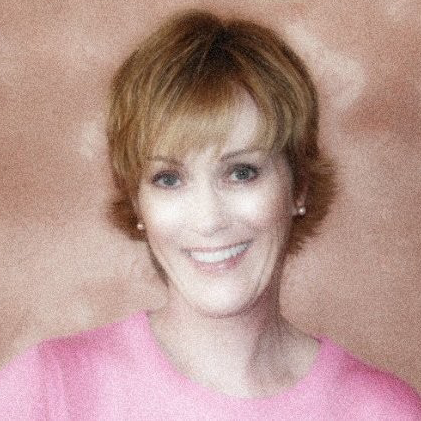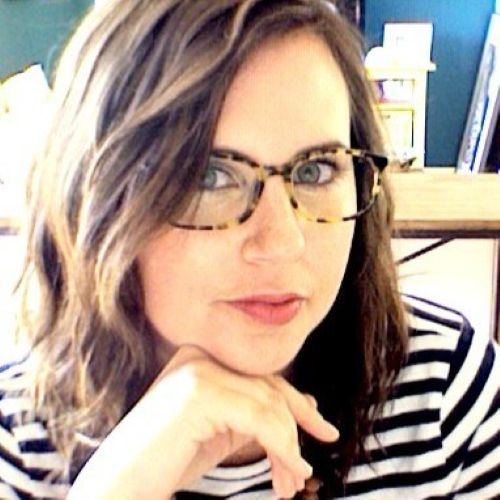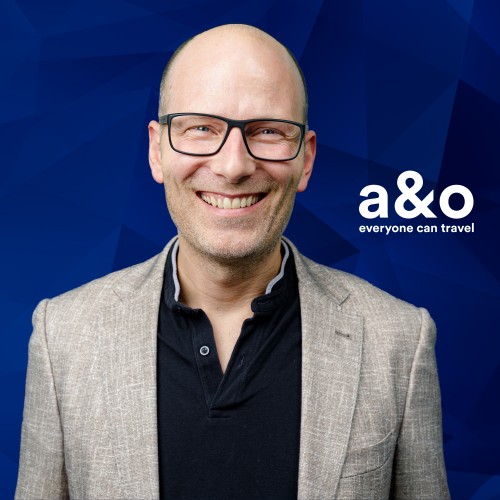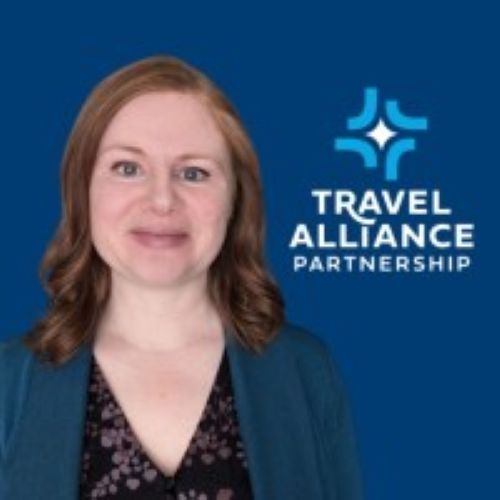Julie Gilbert
Episode 66: Use Technology to Tell a Better Story, with Julie Gilbert
In this episode, you will learn about using technology to develop a more engaging immersive creative from Julie Gilbert.
Julie Gilbert is Vice President of Marketing and Brand Management for Destination Niagara USA where she leads the organization’s marketing, communications, and brand management functions to increase the visibility of Niagara and its assets as a leisure and meetings destination.
With 25 years of tourism marketing experience, Julie joined Destination Niagara USA in 2014 and directed the initiative of repositioning the globally recognized Niagara Falls USA brand.
Previously, Julie served as Director of Sales and Marketing for National Park Reservations, the oldest and largest provider of reservation and information services for national parks and gateway communities.
Julie started her career as Executive Director for Charleston CVB in West Virginia, then became Director of Sales and Marketing for the State of West Virginia. Julie then established a full service travel, tourism, and hospitality agency providing strategic marketing, sales, and management services to a wide range of travel-related companies.
Julie has a Bachelor of Science in Business and Management Studies from the University of Maryland and holds her CTP (Certified Travel Professional) designation from the National Tour Association.
She is currently working on her CDME (Certified Destination Marketing Executive) designation through Destinations International. Julie currently serves on the board of TTRA, Travel and Tourism Research Association, and has just accepted an invitation from Destinations International to serve on the Destination International Foundation Research Advisory Task Force.
More on Julie’s Background
Thank you so much for joining me, Julie.
I’m very excited, Nicole. Thanks for asking me.
I’m really excited about our conversation. I always am kind of amused by all of the acronyms that we have in the travel and tourism industry, so I really felt that I needed to spell those out.
I was thinking the same thing, yeah.
Yeah. CTP, CDME, TTRA.
Oh, I know.
We could probably talk in acronyms, and the two of us would completely understand but we’d lose everyone else.
I know. That’s a scary thing.
Yeah. So before we get started with the questions, I’d really like to hear from you in your own words about your journey and how you’ve gotten to where you are today in your career.
Well, I’d be happy to. Travel and tourism wasn’t the industry that I had initially started out to be in. It was one of those things that fell into my lap right after I had graduated from college. I accepted a job in West Virginia. It really truly was my first love. To be part of a DMO and go into the state’s tourism was a dream come true because it’s a fun type of marketing and sales. You’re providing people with dreams and inspiration which is always fun.
After I left the state … it was because I ended up getting married and having children … I then established my agency. It gave me the flexibility to get into a variety of areas of sales and marketing and business development throughout various types of companies in the travel, tourism, hospitality industry. But always, my first love was destination marketing.
When I relocated to the Buffalo area and was offered the position here at Destination Niagara USA, I just was incredibly excited to be able to be part of an iconic destination and reposition the brand as we have done the last year. That’s how I got here.
That’s really cool. So many of us in this industry didn’t really set out necessarily to work in this industry. We just kind of stumbled upon it. But I have to believe in the law of attraction, so something tells me that we’re kind of drawn to it, right? We’ve got that certain kind of personality that draws us into this industry, so I just find it so interesting when I hear my guests stories and how they reflect on how they got to where they are. So thanks for sharing that.
Absolutely.
On this show we like to focus on creativity and collaboration, two things that are so important to the work that we do. A lot of times I find that it’s hard to talk about one without talking about the other. I know you’ve got a lot of experience in both areas, especially in recent years with Destination Niagara USA, so I’m really looking forward to hearing your thoughts.
Using Technology to Tell a Story
We’ll dive right in with the first question which is really about the competitiveness of the tourism and hospitality industry. There are so many choices out there for people to travel to and so many different reasons for them to travel. I’m wondering what you have done at Niagara USA to help Niagara USA stand out from the crowd.
Well, I think that’s a great question. Niagara Falls is an iconic brand that’s known globally. However, the story that was being told was just the Falls. We took a step back to really look at the product and see how we could be better storytellers, how we could use technology and develop a more engaging immersive creative.
When I first got here in 2014, we didn’t have a lot of video or photo assets which was surprising to me based on the destination. We committed quite a bit of budget as well as pulling in some incredible filmmakers and photographers to really begin to build and create that story along with the development of our new responsive website, which by the way we won an Gold Adrian Award through the Hospitality Sales and Marketing Association that we’re going to go accept next week.
Oh, congratulations.
Yeah, thank you. But I think it’s really telling those stories, understanding who the consumer is and where are your high-value, high-visitation consumers coming from, positioning it. I refer to technology as well because I think as marketers we have to remember to be on the platforms and to be where the consumer is looking because we have several objectives.
One is to inspire, as far as being a destination marketing organization, and how do we do that and where do we do that? It’s all about those stories, all about the platforms and being where that consumer is to ensure that we change that intent to visit.
Yeah. You’re right. Niagara Falls is globally recognized destination or attraction, and so some marketers out there who might be listening to this podcast might think to themselves, “Well how hard is it to market Niagara USA?”
Yeah, I was one of them. If you look at our competitive set, obviously we’re right across the street from the Canadian counterpart, and we do compete but we also support each other. But people that are looking to travel to a destination like Niagara Falls, USA they’re also looking at Washington DC. They’re looking at other national parks. Even though we are a state park, the perception is that we are a national park, and as well as international travel.
We have to really position the destination in the best way possible, and then we also have to look at … well … if people are coming to see the Falls, and if they’re driving through, how can we get them to come other times of the year as well as how can we get them to stay longer and do more activities throughout the rest of the county? Which there are a multitude of things to do.
There’s several different foundational steps that we take in order to build that story. I think the other important thing is, in terms of funding and really being able to position what we do, we have to be very careful and specific on measuring the impact that our marketing has to be able to measure the visitation. Because you know that because it is Niagara Falls, USA there will always be people that will come here regardless. We’re very careful and very specific on measuring what our marketing efforts and sales efforts drive into the destination.
I know there’s quite a few pass there but the competition is out there, and it is fierce because everybody is vying for that domestic and international visitor.
Yeah. Oh, yeah. I agree. Yeah, there’s so many good things here that you just offered. As you were talking, it actually kind of made me think about what happened with Florida last year when the state legislature was considering doing away with the state tourism office and thinking, “Well we’re Florida. What impact does the state tourism office really have?”
The Power of Tourism Data
I’m wondering. Can you talk a little bit more about how you are measuring that impact and how you evaluate that? Then also how you communicate that back to your stakeholders who need to know.
Yeah. We really have a very solid attribution model. As an example, one of the ways that we do it is utilize a platform called ADARA. They’re able to tag various forms of digital media … this is only on digital … and it’s kind of scary, but it follows the consumer after tagging them if they book a hotel, if they book a flight, or how they eventually get into the destination.
So we know if Joe Consumer sees a … I’m gonna just use a very easy example … sees a banner ad on travel and leisure on the digital format, and they click through on that ad and we drop a pixel on them. And then 30 days later they actually end up booking at one of our hotels in the county. We see that, we track that, and we attribute it to that particular advertisement.
That’s one way that we do it. We also do conversion studies based on our lead generation, our database, and our website, so visitations on the website. Now we don’t get everybody. That happens for a variety of reasons because if a cookie is broken or they have blocked tracking, so we usually run at about a 75%.
And then we have our Longwood sister profile study which provides us with a breakdown of the visitors who are actually coming into the destination. We do tourism economics which is with the state of New York, and we are able to purchase country information. That is really economic impact.
We utilize STAR information which provides us with supply/demand and RevPAR and some different variances there, as well as we’ve just purchased Visa View data, so it provides us, based on the large international market that comes in … It’s very difficult when you’re in a secondary market and you don’t have the main point of arrival, as an example, New York City, where people are flying directly in there. They have an easier way of tracking that visitation.
For international visitors, a majority of them … not all of them but a majority of them … do use Visa card, so we’re able to purchase that Visa card data that lets us know country, city, or DMA domestically as well and where they’re spending their dollars. Again, only on their Visa cards.
We look at all those various data points as data overlays, and each one tells a little bit of a story. We leverage all of that data against each other to be able to gain insight as well as hard economic impact. And we use that economic impact in monthly newsletters and presentations to various elected officials in order to make sure that it’s very clear on what was generated, how it was generated, and how we’re moving forward to increase that.
Did that make sense?
Absolutely. Yeah. I love that you’re using a lot of the tools like the tourism economics, the visitor profile study that you do, the STAR report, a lot of those tools that I know personally of several DMOs that use that. But then I love that you’re overlaying it with this additional information, that you’re using ADARA, that you do these conversion studies on your lead generation, and Visa View.
Yeah, and I think is bottom line is it’s creating some benchmarks because any one piece of research is not going to tell you everything you need to know. None of it is 100% foolproof, and you always have to look at what’s happening in the destination, if you see a spike in something or … But at least it gives you some benchmarking where you can see progress.
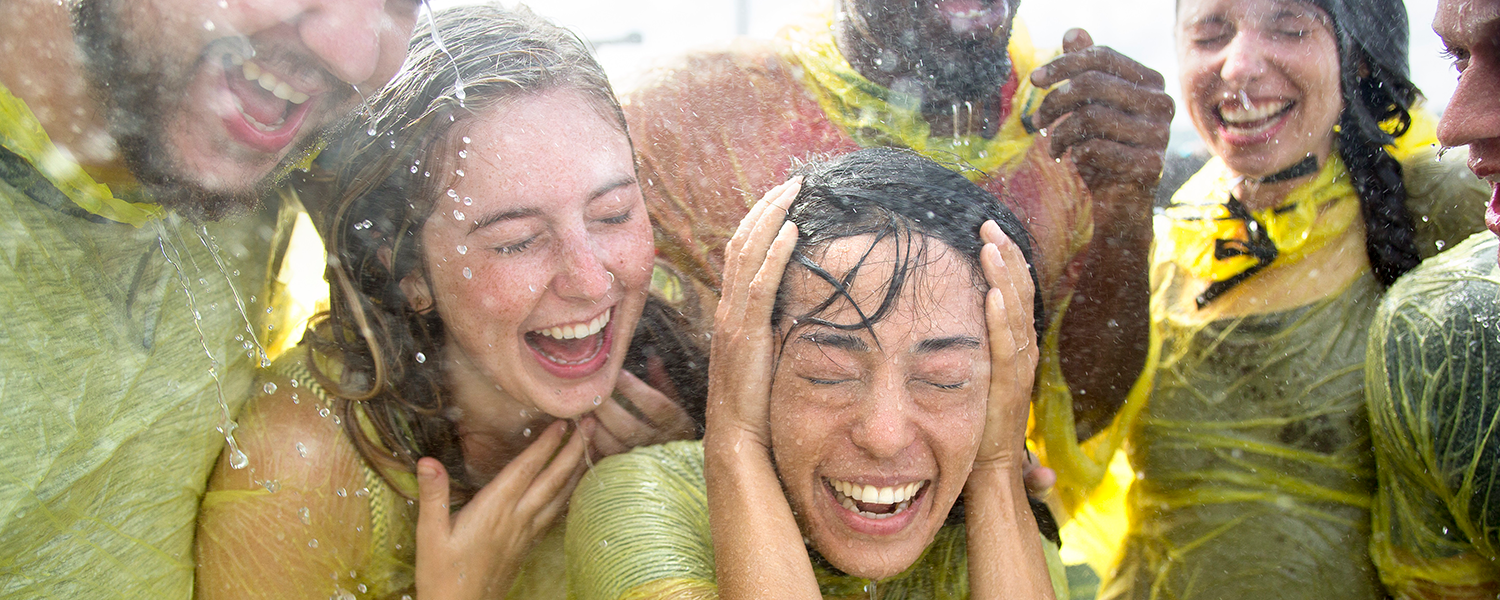
Destination Niagara USA
[bctt tweet=”“No one piece of research is going to tell you everything you need to know.” – Julie Gilbert #WhyCollaborate #podcast”]
I think it’s important to look at that picture from a 360-degree angle.
Yeah, I agree. That’s so true. That’s fabulous. Well, thank you for sharing that. You share that information out with your stakeholders. You said you have a monthly newsletter.
Yes. Yes we do.
And then you have a presentation, so you’re touching your stakeholders at least once a month with some kind of information on the research that you’re doing. Is that accurate?
We will start doing that in March. So at the end of Q1 we’re redoing our dashboard. Each destination is so different where certain information is more important to one group of stakeholders perhaps. Maybe in Niagara County, even vs Erie County. We try to make sure that we’re providing that relevancy to our particular partner group, as well as elected officials too, and make it very seamless and very simple.
Yeah, that’s great. Well that was terrific.
Niagara USA’s Rebrand
I’d like to back up a little bit to what we had started with. I know that in your bio I had read, if listeners caught it, that you led a rebranding initiative for Niagara USA, and I’m certain it was well informed by research.
Can you talk a little bit about how that went? And you started to talk a little bit about it in terms of you’re looking at your video and photo assets and looking at those different platforms and kind of bringing all that together. Can you share with our listeners a little bit about how that rebrand went for you?
Yes. I think the most important thing to know, particularly with branding, is that is probably our most lethal marketing technique or weapon in our arsenal. Branding provides you with very, very strong paths that an organization needs to follow. It gives you parameters, it gives you filters, and it’s such an important part of how you market your destination.
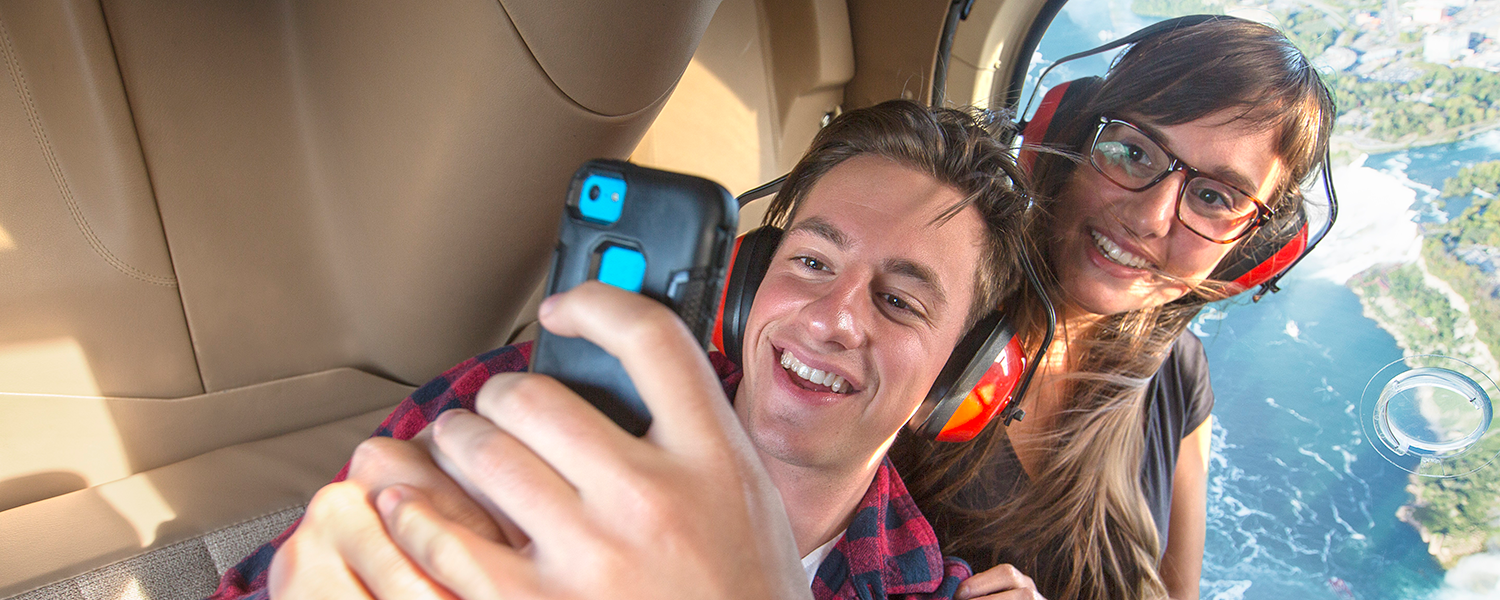
Destination Niagara USA
[bctt tweet=”“Branding is the most lethal marketing weapon in our arsenal. Branding provides your organization with very strong paths to follow. It’s such an important part of how you market your destination.” – Julie Gilbert #WhyCollaborate #podcast”]
It took us 18 months. We were very, very pragmatic on building that out. If you look at Niagara County there’s … And it’s probably the same in many destinations where we have several different core groups of assets that we market to visitors. It’s not all just Niagara Falls, but we knew Niagara Falls is the attractor.
We took quite a bit of time to go through a pretty extensive research program where we interviewed all of the various segments of the industry throughout the county and really then did consumer focus groups in Pittsburgh and New York City, again, to have a better understanding of the perception as well as utilizing some of the visitor profile research that we already had.
After that was completed we then brought back everybody throughout the destination who had participated, which was almost everyone throughout the travel and tourism and hospitality as well as elected officials, to provide them with an overview of the brand architecture which gave us our brand voice and our brand promise and really, again, provided us with that roadmap.
And then from there, that’s when we started on the creative development because I know a lot of people think that new brand is just a new logo, and that’s really not the case. It’s a much more comprehensive, complex process. We knew that there were various elements with the development of a new moniker and a new tagline, but we also wanted to make sure that we tested it, again, with that consumer.
Because ultimately your destination is driven by the perception of the consumer, and that’s really important to remember. It’s not what maybe you think is the best of the destination. It’s really what the consumer thinks is the best of the destination.
We pulled from the architecture some of that research, provided it to a creative agency, and they went through various iterations of creative as well as taglines. Then we put it out again to a focus group. Some of the creative absolutely just took over everything which the majority of the staff, it was not their first choice. But it was what the consumer wanted, and I love it now. But it was not my first choice, as well as the tagline.
From there, we knew that from the architecture to the bottom line creative that we had covered all of our steps in order to be able to provide the best possible brand and logo and tagline that really we could build on telling that story. Because at the same time, we changed our website, we changed our URL, and then everything within our visitor center. It was all in one fell swoop, which I don’t know if I’d recommend that to anyone to do.
What it has provided us … and I’m reiterating what I said earlier … is guidelines that we have established now that any promotion, any creative, any messaging throughout all of our departments, if it’s sales, or visitor services or marketing or communications, it has to run through a series of filters. If it doesn’t match the brand filters we don’t do it.
It keeps you very focused, it keeps you on track, and it provides you with that path that makes it a whole heck of a lot easier. And it produces that consistency.
Yeah, I think there’s so much good information here. I like that you started with “this was an 18-month project.” This is not just “let’s get a new logo and a new tagline,” and that you did those consumer focus groups in your feeder markets. You didn’t just do them, say, in market, right, with visitors that might already be there.
Right, right. No, we went to them. It’s a little more expensive. Another reason why we spread it out was just for budgeting purposes as well to ensure that we did it not only the right way but we had the funding in order to cover all of that the right way as well.
Yeah. Yeah, that’s great. And then you did all of this work on your brand architecture, you said your brand promise, your brand voice, et cetera all before you even got to the creative which I think is a very important point.
Yes.
And then tested that creative with the consumer. I also thought that was a really good nugget that you shared as well which is it’s not what you think. It’s so hard sometimes as marketers you know?
Yeah. Yeah, we’re always right.
We become the focus group of one.
I know. Exactly.
Yeah, so I think that that’s all just really fantastic. Could you take another minute and just explain how this new brand … I also like that you started with “we knew that Niagara Falls … We’re more than Niagara Falls, but that is our attractor.”
Yeah.
And so could you explain a little bit about how that’s your attractor, but then how you have brought in the rest of the destination to the story.
Yeah, so we looked at … obviously using Niagara Falls USA as the destination name, which again, we took that out across all of our partners in Lockport, in Lewiston. We just wanted to make sure that everyone understood, based on the research, why this was an important name for the brand in order to be able to continue to catch that consumer because it’s a known, iconic destination.
We looked at our visiting consumers and broke them up into personas. We’re Niagara Falls USA where adventure comes naturally. And from that we have thrill seeker, we have adventurer, we have some of the other personas that cross channel various assets and activities throughout the county.
So we started to build that story based on those personas. It’s allowed us to really be able to show that well, yes, if you come to Niagara Falls USA to see the Falls, here are some other things that you may want to do that you probably didn’t even know about. Obviously that’s not what we say, but we say it with video. We say it with photography.
Another point I think is really important for listeners is that content in terms of any media asset is so important to have and do every season and every year. Even if it’s user-generated content, which we have a lot of with another partnership with a company called CrowdRiff, and that’s how you change that intent to visit because consumers started just seeing more activities than just going to look at the Falls or going into Niagara Falls State Park, which are huge attractions for us.
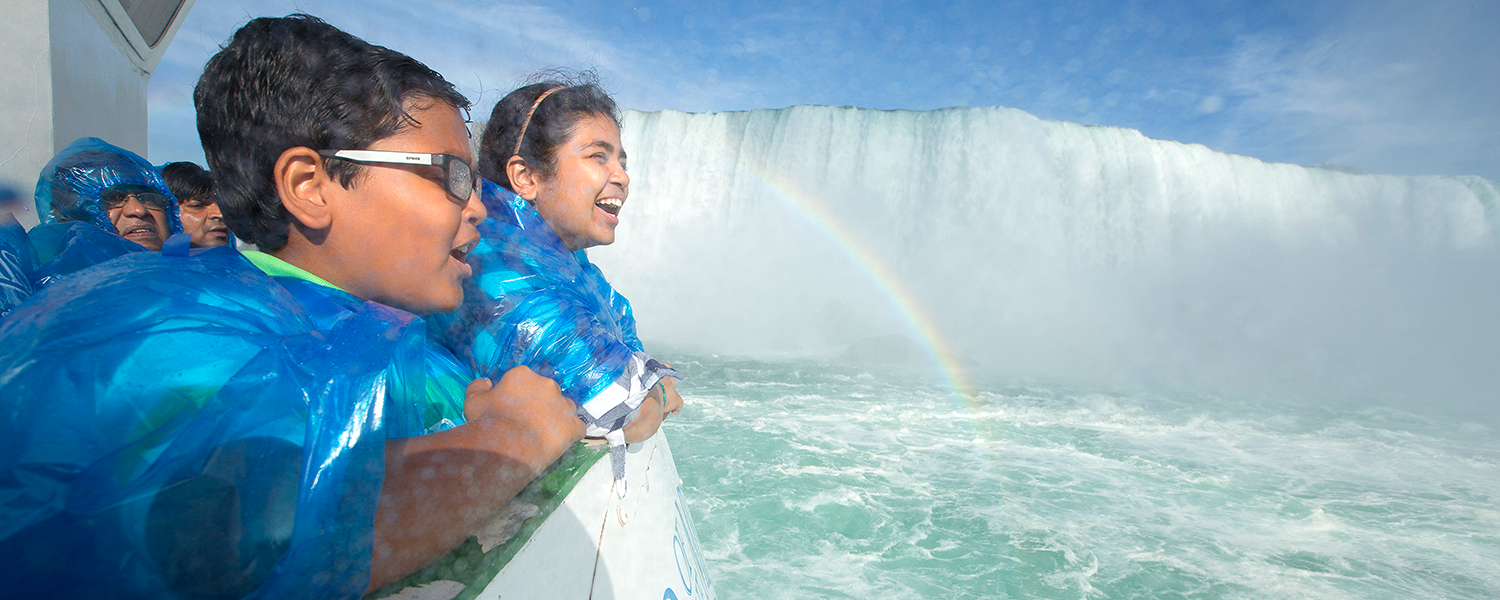
Destination Niagara USA
[bctt tweet=”“Ultimately your destination is driven by the perception of the consumer, and that’s really important to remember.” – Julie Gilbert #podcast”]
But they didn’t realize that it’s 20 minutes to get to Niagara Wine Trail, or 30 minutes to get to the Erie Canal, or 15 minutes to go down into the gorge to do jet boats and the helicopter tours, as well as Old Fort Niagara. There’s just a multitude of activities, but it’s how you position them. It’s how you tell the story, and it’s how you provide that vision for the consumer on what they can do on any given day and how they can mix and match. It’s telling that story and showing the story, actually, as well.
Yeah, I love that, telling and showing the story. And I also like that … I’m familiar with CrowdRiff, and I like that you’re using user-generated content because first of all, we just can’t be everywhere.
Well, I know it.
Second of all, it gives that nice third-party endorsement, right, that if everybody’s doing it that it must be cool.
As an example, we have triggered responses to a lot of our users. When the user-generated content is filtered into our backend and we’re able to review, and it does come onto the website. A lot of this year’s travel guide photography was UGC. It just gives a different level of authenticity to it.
One thing too I’d like to point out for some of the other innovative things that we’ve done is, in our travel guide … We print 500,000 travel guides. We’re probably one of the few destinations left that actually print that many, but we have a massive, massive distribution through which those travel guides are put into the consumer’s hands.
But what we wanted to do … And we started this test last year where we incorporated augmented reality on a double-paged spread. It wasn’t as successful in terms of engagement that we were hoping because you had to download the app called Layar. It’s L-A-Y-A-R. But now with this last upgrade on the iOS operating system, it’s already in there.
Adoption I don’t think will be huge this year, but I think in the next two to three years. And it’s really interesting because right now we’re just testing it where we have a beautiful double-paged photography spread that really reflects the brand and that whole piece of adventure. You download the Layar app. Or if you have it on your operating system, iPhone, it pulls up our video.
So it provides more immersive content in addition to the photo assets which brings a whole other dimension to the travel guide. It allows you to able to identify the consumers that are actually viewing that video, how long they stay on, where they’re from.
And again, we didn’t get a whole bunch of data from that. I’m hoping that it will continue to evolve but the ramifications of that could be tremendous. It could increase ticket sales for different companies. There’s just a lot of application that it could be transferred to, so again, we’re just trying to test ’cause I think technology will make or break marketing in the next three years as we’ve already seen.
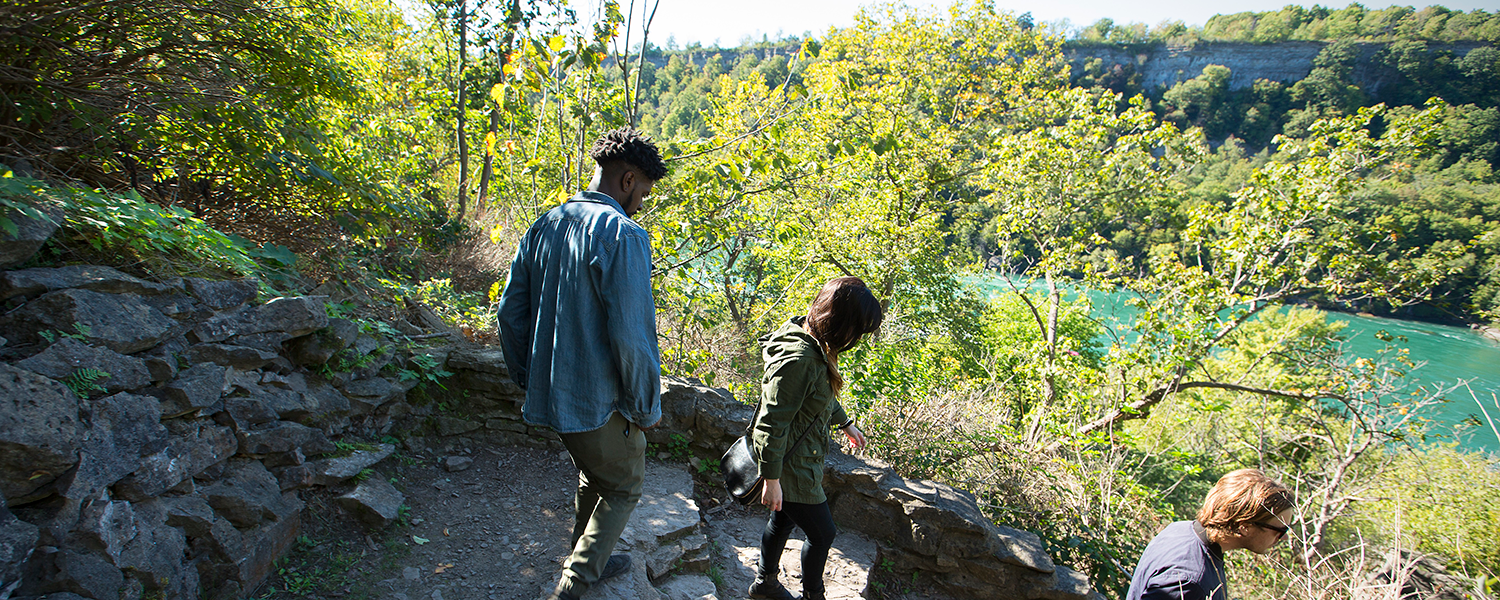
Destination Niagara USA
[bctt tweet=”“Technology will make or break marketing in the next three years.” – Julie Gilbert #WhyCollaborate #podcast”]
Yeah, I completely agree. I remember hearing that augmented reality is now in the new iOS version. And actually, that makes me think about the very technology that we’re using right now which is podcasts and how when the podcast app ended up in the iOS … I forget which version it was … that’s when podcast adoption really started to skyrocket, and it’s still on huge upward trend.
I think that that’s really great that you’re in there early experimenting with it. And I agree with you. It’s gonna pay its dividends, but you have to be patient, especially if you’re an early adopter.
Yes. Yeah, I think we’re the only ones. I don’t know about this year. Last year, I’m positive there were no other DMOs that did that particular augmented reality. We’ll see how it evolves. Again, the print publication, for us, it is not dead. I know a lot of people think it is, but it it’s not with this particular destination, and people utilize it.
The other really interesting thing is that for the distribution that we do on the website, we can utilize ADARA and Pixel, the people that actually request a travel guide and see if they actually end up booking into the destination.
Oh, that’s interesting.
Yeah, not the whole picture but gives us a sense ’cause I think that’s important.
Yeah, absolutely.
Work Together for the Best Possible Outcome
Well this has been a great conversation. I knew it would be. I want to get onto the other topic that I like to talk about, which is collaboration and really to hear some thoughts that you have on that.
When I think about collaboration in travel and tourism, I like to call it coopetition. You actually even mentioned it earlier when we first started this conversation where you talked about Niagara Canada as well as Niagara Falls USA and how you do compete, but you also do support each other in a way as well.
I’m really interested to hear a time, or an example of a time, when you had a collaboration between perceived competitors and how that worked for you.
Yeah. Actually the one that comes to mind immediately is Buffalo, which again, the competition is more geopolitical boundaries unfortunately. And it’s nice. If you look at the Buffalo product, it compliments the Niagara Falls USA product because their art and museums and sports versus the outdoor adventure.
So it would be nice if the geopolitical boundaries were not there as much as they are. We did have a very successful three-year program that was funded through a CFA grant. We did research. It was directed to the Canadian market in the Toronto area, and it was defined as girlfriend getaways.
We actually won an award last year at ESTO in 2017? Yeah. We tracked everything. It was content developed for that girlfriend getaway in mind, an hour and a half away. We put together itineraries based on style of shoe.
So you could be a sneaker wearer and there would be an itinerary with assets from both counties. Or you could be … I can’t even remember all of them, but there were … I want to say there were five. We deployed across all of our channels. There was social, paid social, paid search. We had specific landing pages, email, and it generated an unbelievable amount of visitation.
It really made sense because, again, we leveraged assets from both counties and developed product that was really based on the consumer’s desire and request for certain types of product offerings, not on the … I don’t want to say geopolitical, but not on the geographic location, the fact that it’s Buffalo and Niagara Falls USA. It was purely on, “How do we position this as a full product offering based on what the consumer has told us?”
I think that’s really important for us to remember. We were able to identify economic impact, visitation, all of those elements that showed that the funding that we had received did generate results.
Yeah, that’s great. I think it’s wonderful that you were able to look at the product in a more holistic way and kind of take the geographical lines out of it because the consumer doesn’t care about that.
They don’t care. I know. We, as DMOs, we always have to be sensitive to that based on our funding. It’s one of those realities of the world, but it’s also we have to be very real about what the consumer is asking for. And bottom line, that’s what we’re trying to do is provide the most easy, seamless type of product to get that consumer to visit the destination. If that destination is perceived as a variety of attractions or activities or itineraries that cover more than two, three, four, or five counties, then that’s a win for everyone.
Yeah, absolutely. I agree. In that experience or any of your experiences in working collaboratively in a partnership, do you have one or two kind of words of wisdom or pieces of advice that you could share with our listeners how to navigate a successful partnership?
Yes I do. I think it has to be a shared goal. I think that has to be very clear. I think communication is key. I think that’s the biggest challenge. We all get really busy in our day-to-day duties and what we’re primarily responsible for. When you have a shared program, sometimes one of the organizations really bears the brunt of the workload.
It’s really hard to try to find that balance and ensure that everybody is providing that same level of input. It’s hard to rule by committee, and you just have to step back and take the ego out of the room and ensure that those decisions are being made, again, for the best possible result for that campaign and that it’s driven by what the consumer insight has told us.
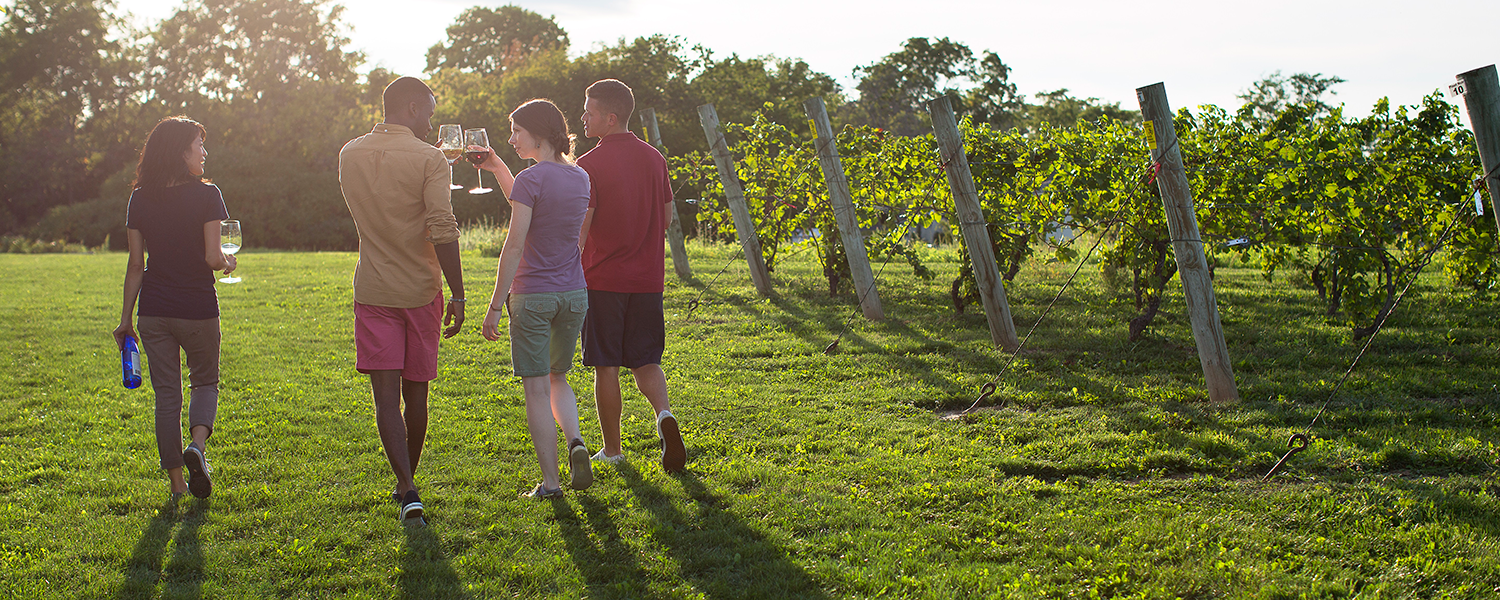
Destination Niagara USA
[bctt tweet=”“It’s hard to rule by committee. Step back and take the ego out of the room and ensure that decisions are being made for the best possible result for that campaign.” – Julie Gilbert #WhyCollaborate #podcast”]
That would be my best advice I could provide.
Well, and I think that’s great advice. I like that you said take the ego out of the room because sometimes it’s hard, right, when you have a program or you’ve got your vision and you’re really trying to charge forward. You just need to back up.
It’s super hard.
Yeah.
Yeah. We, as marketers, and we, as DMOs, we have big egos. We have to. It’s just one of those things that it is very hard. I mean you work in a lot of groups, and you have to navigate different organizations in order to bring them together for one main objective. In many cases that’s not easy.
It’s the same in any kind of collaborative program.
Yeah. Well, I think that that’s great advice, and you’re right. It’s not easy, but I always say if it were easy everyone would do it, right?
I know, right? Yeah.
So if it’s worth having, we’ll keep plugging away.
It’s so true. It’s so true.
For sure.
Exactly. Exactly.
Yeah. Julie, before we wrap up and say goodbye, do you have any final thoughts or anything that you’d like to share that we haven’t gotten to yet?
I think, especially after talking with you earlier, you just brought up some really good points. I think particularly with DMOs and marketing and sales, we can never stop learning. It constantly changes on a daily basis, and we owe it to our organizations, and we owe it to the consumers, and we owe it to ourselves to continue to stay on top of the information.
These podcasts you’re providing to people out there, you’re doing that. I’m so grateful and appreciative that you asked me to be a guest. I just think it’s a really, really good thing because, again, you’re providing that education for people because we, as marketers and salespeople, we cannot stop learning, and we cannot stop moving forward.
Well, thank you. I couldn’t agree more. Never stop learning. I said as you and I discussed in our pre-interview chat that that’s what kind of keeps people like you and I engaged and interested in this industry ’cause there is so much to learn all the time.
Yes.
It keeps us charged up, right?
Well, and it’s a difference of marketing a destination versus marketing a dental tool. As I always say to students at Niagara University or others. We work in a pretty sexy industry. It’s fun. We make people feel good, and we provide them with their dreams and inspiration.
It’s an industry that never grows old. It’s lots of fun.
Yeah, I agree. What a contrast. I like that.
Oh, for sure.
Yeah, compared to a dental tool.
Oh, that was kind of extreme wasn’t it?
Yeah, but I like it. What a great contrast. But anyway, Julie, we’ve had a great conversation. Thank you so much for taking your time to be here with us today.
Oh it was my pleasure.
Thanks.
My pleasure. Anytime, Nicole. Thank you so much.
We value your thoughts and feedback and would love to hear from you. Leave us a review on your favorite streaming platform to let us know what you want to hear more of. Here is a quick tutorial on how to leave us a rating and review on iTunes!
